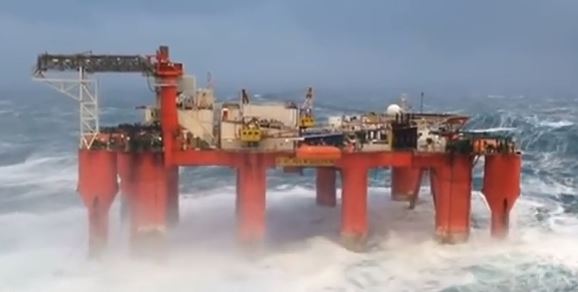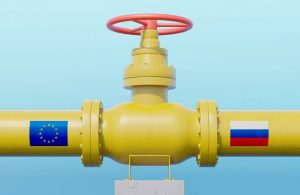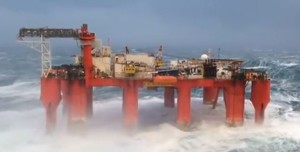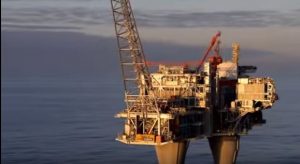
Leadership / Nigeria: The minister of state for petroleum resources and group managing director of the Nigerian National Petroleum Corporation (NNPC), Dr Ibe Kachikwu, has disclosed that drilling activities will commence in the Chad Basin in the fourth quarter (Q4) of this year.
Kachikwu who disclosed this yesterday through the group general manager, Group Public Affairs of the NNPC, Garba Deen Mohammad, stated that the commitment of the federal government and the NNPC to explore for oil and gas in the inland basins, especially Chad Basin and the Benue Trough, is unwavering and on the front burner.
Specifically, he said, the NNPC through its Frontier Exploration Services and Renewable Energy Division (FESRED) had progressed reasonably with seismic acquisition activities in the Chad Basin frontier area till insurgency necessitated the suspension of operation there.
He said eight phases, out of the planned 12 phase project, to cover 3, 550 sq.km, had been acquired by the date of suspension of operation on November 24, 2014.
“A total of 1, 962 sq.km have been acquired and processed; interpretation is currently ongoing at about 90 per cent completion, and drilling activities will commence by the last quarter of 2016,’’ Kachikwu disclosed.
He explained that the seismic activities were carried out with due regard to environmental protection and in accordance with international best practices, and was being handled by the Integrated Data Services Ltd, a subsidiary of the NNPC, and BGP, a subsidiary of China National Petroleum Corporation (CNPP).
Kachikwu noted that exploration in the Chad Basin was aimed at increasing the nation’s oil and gas reserves and adding value to the hydrocarbon potential of the Nigerian inland basin, providing investment opportunities, boosting the economy as well as creating millions of new jobs.
“The decision to diversify our business portfolio is about all of us and about the future of our dear country; the vision is clear, and we are determined not to fail,’’ Kachikwu added, while inviting the private sector and venture capitalists across the globe to partner with the NNPC in planned Special Purpose Vehicles (SPVs) to profitably harness the enormous energy resources in Nigeria.
In March this year, President Muhammadu Buhari had disclosed that his administration had plans to extend oil and gas exploration into new fields in the Chad Basin in the North East and in the coastal states, like Lagos, where oil has been discovered in commercial quantity.
The president, who spoke through Vice President Yemi Osinbajo, while declaring open the 6th African Petroleum Congress and Exhibition (CAPE VI) in Abuja, disclosed that, as part of strategies to reposition the Nigerian oil and gas industry, his government had commenced the process of implementing carefully conceived initiatives which would see the country hitting a production target of 2.8 million barrels per day (bpd) of crude oil.
Meanwhile, findings showed that oil exploration in the Chad Basin dates back to 1978 and that about 23 wells had been drilled and abandoned in the north over the years; however, the debate about the region having proven oil in commercial quantity as well as perceived lack of will for intensified search had delayed the project till date.
‘Oil to trade above $60 in 2017’
Oil supply growth by OPEC countries will not match the output declines being experienced by non-member producers and this could lead to higher crude prices next year.
To balance the oil market by 2020, US oil and gas capital expenditure will have to increase by at least 50 per cent, leading oil prices to trade above the current forward strip and into a $55-70 per barrel range, said a report by Bank of America Merrill Lynch entitled, “Global Energy Weekly: The oil supply cliff-hanger”.
There is still a large set of drilled but uncompleted shale wells that could come on stream over the next few months and US companies are expected to play a role in stabilising non-OPEC supplies, it explained.
However, cartelized producers at the moment have limited spare productive capacity or planned investment to meet demand on a forward basis, leaving the oil market exposed to huge supply uncertainties over the next five years, it said.
A string of twists and turns ahead of producer meetings in Vienna and Doha in recent months have turned oil market developments into a serial drama.
“Yet one fact remains in this OPEC cliff-hanger: non-OPEC oil supply is indeed hanging off a cliff. We estimate global output is set to contract year-on-year (YoY) in April or May for the first time since 1Q13 as OPEC growth no longer offsets non-OPEC declines,” BofAML said in the report.
“The drop in supply has come on the back of massive cuts in global oil and gas capital expenditure. Our new analysis points to non-OPEC oil field decline rates of 4.9 per cent on average this year, up from 4.2 per cent in 2014. However, as drilling rigs in non-OPEC countries have been idled, the Middle East rig count has held steady.
“So we stick to our view that Brent will average $61 per barrel in 2017,” said the BofAML report.
“A key risk to this view is how fast Saudi and other GCC members decide to monetise their low cost reserves. For now, Aramco’s output is relatively flat compared to last year. With Saudi leaders pulling out of the oil freeze deal in Doha last minute, the market keeps second-guessing their next move.
“Also, disruptions are relatively high at the moment, suggesting there is room for production to come back in Libya, Yemen, or Nigeria if politics allow. But low oil prices could also trigger strikes and unrest in producing countries. In short, if Saudi output remains constant, oil prices should trend higher,” it concluded.




